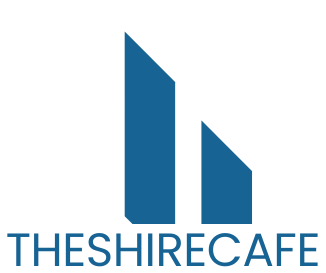Navigating the world of home loans can feel like trying to solve a Rubik’s Cube blindfolded. Enter the FHA loan, a lifeline for many first-time buyers. With its flexible debt guidelines, it’s like having a friendly neighbor who’s always ready to lend a cup of sugar—or in this case, a little financial support.
Table of Contents
ToggleOverview of FHA Loans
FHA loans serve as a practical financing option for many homebuyers, especially first-timers. These loans provide accessibility through flexible requirements and benefits.
What Are FHA Loans?
FHA loans, backed by the Federal Housing Administration, aim to increase homeownership among a wider range of buyers. They often feature lower down payment requirements, sometimes as low as 3.5 percent. Qualifying for these loans involves less stringent credit score criteria compared to conventional loans. While these loans assist individuals with moderate incomes, they require borrowers to purchase mortgage insurance.
Benefits of FHA Loans
Affordability remains a significant benefit of FHA loans. Low down payments make homeownership attainable for more people. Additionally, these loans offer competitive interest rates, leveraging government backing to secure favorable terms. Borrowers enjoy the advantage of assumable loans, allowing future buyers to take over existing mortgages. Flexibility in qualification standards helps candidates with less-than-perfect credit secure funding.
FHA Loan Debt Guidelines
FHA loan guidelines provide essential criteria for potential borrowers, emphasizing flexibility and accessibility. Understanding these requirements helps streamline the home buying process for first-time buyers.
Understanding Debt-to-Income Ratio
Debt-to-Income (DTI) ratio plays a crucial role in FHA loans. Lenders typically prefer a DTI of 31 percent or lower for housing expenses. Total DTI limits can reach up to 43 percent, allowing room for other debts. When calculating DTI, both monthly housing costs and total monthly debt obligations factor in. A lower DTI often results in better loan terms and rates.
Maximum Debt Limits
Maximum debt limits for FHA loans vary based on location. In most areas, the limit sits around $472,030, while high-cost areas may reach up to $1,000,000. These limits adjust based on the median home prices and community needs. Borrowers wishing to secure a mortgage above these limits can seek FHA jumbo loans. Meeting these standards ensures that individuals benefit from the federal assistance intended to promote homeownership.
Qualifying for an FHA Loan
FHA loans offer accessible options for various borrowers. Several criteria determine eligibility, particularly credit score and employment stability.
Credit Score Requirements
Credit scores play a crucial role in FHA loan qualification. Lenders typically accept scores as low as 580 for maximum financing options. Borrowers with scores between 500 and 579 can qualify; however, a down payment of 10 percent is necessary. Higher scores may lead to better mortgage rates and terms. Maintaining a consistent credit history can benefit potential homeowners as it ensures eligibility for more favorable conditions.
Employment History and Stability
Employment history impacts FHA loan qualifications significantly. Lenders expect a two-year stable employment record in the same field or occupation. Consistent income shows reliability, enhancing chances of approval. Gaps in employment may raise flags; however, valid reasons can mitigate concerns. Part-time or seasonal work does qualify but must demonstrate ongoing income streams. Providing detailed employment documentation strengthens applications, ensuring lenders recognize financial stability.
Application Process for FHA Loans
The FHA loan application process involves multiple steps and requires specific documentation. Understanding these components helps streamline the journey to homeownership.
Required Documentation
FHA loan applications necessitate several key documents. Borrowers must provide proof of income, such as pay stubs and tax returns, for the past two years. Lenders require credit reports to assess creditworthiness. Additionally, bank statements showcasing asset verification provide insights into financial stability. A valid identification, such as a driver’s license or passport, is essential to confirm identity. Each document plays a crucial role in establishing eligibility and securing favorable loan terms.
Steps in the Application Process
Initiating the FHA loan application begins with pre-approval. Pre-approval allows borrowers to discover how much they can afford. Next, selecting a qualified FHA lender ensures that the application meets all federal guidelines. After choosing a lender, borrowers submit required documentation for review. Lenders evaluate the borrower’s financial situation and credit profile before issuing a loan estimate. Following that, the underwriting process assesses risk and finalizes approval. Closing involves signing documents and completing the transaction, enabling borrowers to secure their new home. Each step is vital for achieving success in obtaining an FHA loan.
Navigating the world of FHA loans can be a game-changer for many aspiring homeowners. With flexible debt guidelines and lower barriers to entry, these loans open doors to affordable homeownership. Borrowers can take advantage of competitive interest rates and the ability to qualify with less-than-perfect credit.
Understanding the specific criteria for FHA loans is essential for maximizing opportunities. By maintaining a steady employment history and managing debt wisely, individuals can enhance their chances of approval. As the housing market continues to evolve, FHA loans remain a viable option for those looking to achieve their dream of owning a home.



